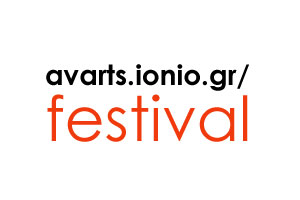Abstract
In every election voters are exposed to a vast array of visual stimuli with photographs playing a crucial role in shaping political narratives. Politicians use carefully curated images on social media, depicting themselves engaging with citizens, interacting with officials, delivering speeches, and participating in events. These images are not neutral; they are strategically framed to influence public perception.
This paper examines the visual self-presentation of Greek political leaders during the 2023 national elections by analyzing the camera angles and camera distances in their Instagram photographs through a comparative content analysis. It investigates how these framing devices are employed, what they reveal about each leader’s image, and how their use differs among leaders with distinct political narratives. By exploring the role of photography in digital political communication, this paper contributes to a broader understanding of how visual framing shapes voter perceptions in the social media era.
Keywords: photography, camera angles, camera distances, visual framing, Instagram, Greek elections.
Extended abstract
Visual framing extends beyond verbal communication, embedding messages within imagery through compositional choices that shape viewers' interpretations, making it more subtle and harder to detect (Messaris, 1997). Photography is a powerful medium for political messaging, creating an illusion of objectivity while subtly guiding perception. It plays a key role in constructing an idealized public image of politicians (Huxford, 2015). Camera distances (close-up, medium, and long shots) and camera angles (eye-level, low, and high) function as powerful framing devices and contribute to this process by evoking emotional responses, conveying meanings, and shaping the viewer’s perspectives (Messaris, 1997). The framing of a subject in a particular shot determines the perceived interpersonal distance between the politician and the audience, thereby influencing the intensity of their connection (Meyrowirz, 1986). Close-up shots foster familiarity and emotional engagement, while long shots create detachment, positioning the subject as distant or unfamiliar. Medium shots maintain a neutral yet engaging perspective. Similarly, low-angle shots enhance authority and dominance, whereas high-angle shots suggest weakness and vulnerability. Eye-level shots, however, convey visual parity, positioning the politician on equal footing with the viewer (Kress & Van Leeuwen, 2006).
These visual framing devices, which shape voter perceptions of leadership, strength, and approachability, enable political leaders to craft intentional narratives that reinforce their political messaging (Lalancette & Raynauld, 2019). Moreover, social media platforms like Instagram have simplified this process by providing leaders with a direct, autonomous channel to engage with the electorate (Steffan, 2023). As Instagram becomes an increasingly dominant platform for political communication, the strategic use of photography in shaping public perception has never been more significant.
This study examines how Greek political leaders Nikos Androulakis, Kyriakos Mitsotakis, and Alexis Tsipras used photography during the Greek national elections held on May 21 and June 25, 2023 to visually construct and communicate their public image on Instagram. It specifically focuses on the strategic use of camera angles and camera distances as devices of visual framing, exploring what they reveal about each leader’s image and how their use differ among politicians with distinct political narratives.
Using a qualitative content analysis, the study analyzes the static photos posted by each candidate on their personal Instagram profiles, coding them for two key structural features: camera angles (low, high, and eye-level) and camera distances (close-up, medium, and long shots). By examining these variables, the study explores their role in constructing leadership personas-whether by reinforcing authority, fostering intimacy with voters, or maintaining a neutral presence. A comparative analysis further evaluates variations in visual framing strategies across the leaders’ digital campaigns.
This research, part of a broader project, advances the understanding of visual political communication in digital spaces and contributes to the growing discourse on how leaders strategically use electoral photography to shape public perception during online campaigns.
References
Huxford, J. (2015). Visual Images in the Media. In J.D.Wright (Eds), International Encyclopedia of the Social & Behavioral Sciences (pp. 169-174). Elsevier.
Kress, G., & van Leeuwen, T. (2006). Reading images: The grammar of visual design. Routledge.
Lalancette, M., & Raynauld, V. (2019). The power of political image: Justin Trudeau, Instagram, and celebrity politics. American Behavioral Scientist, 63(7), 888–924.
Messaris, P. (1997). Visual persuasion. Sage.
Meyrowitz, J. (1986). Television and interpersonal behavior: Codes of perception and response. In G. Gumpert & R. Cathcart (Eds.), Intermedia: Interpersonal communication in a media world (pp.252-272). Oxford University Press.
Steffan, D. (2023). The visual presentation of politicians. In D. Lilleker & A. Veneti (Eds.), Research Handbook on visual politics (pp. 109-122). Elgar Publishing.
Visual designer
Back





